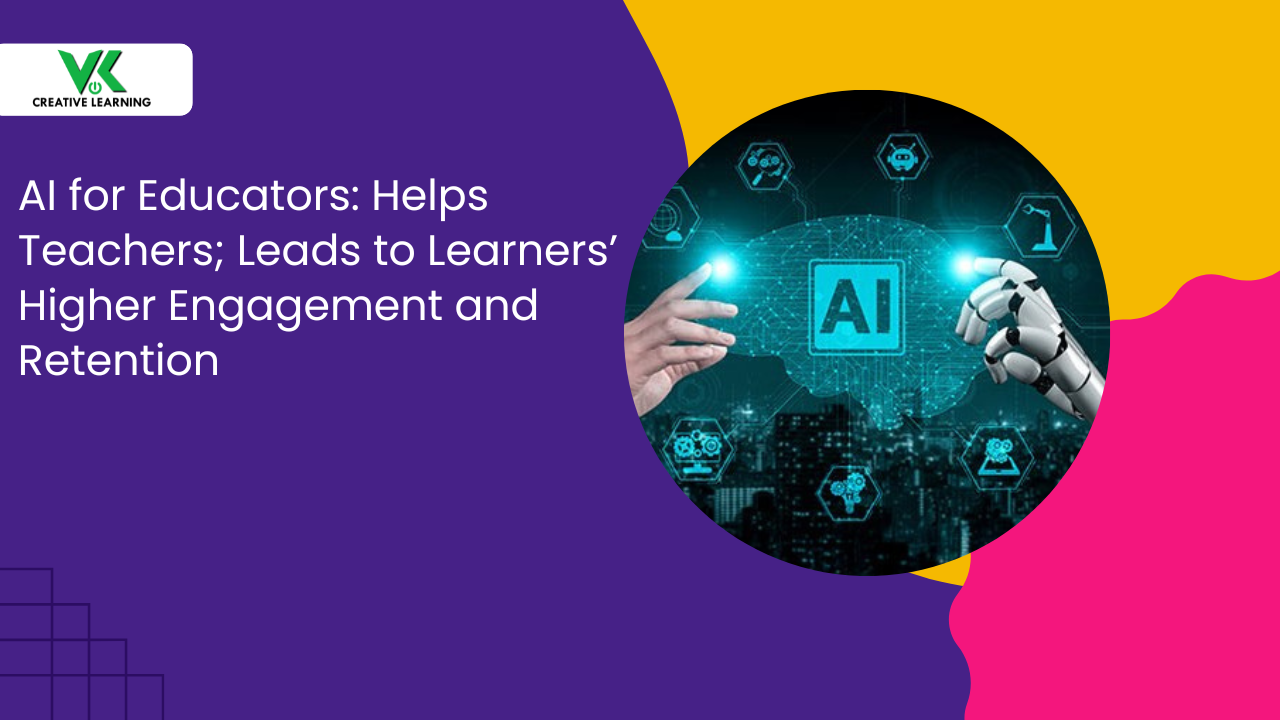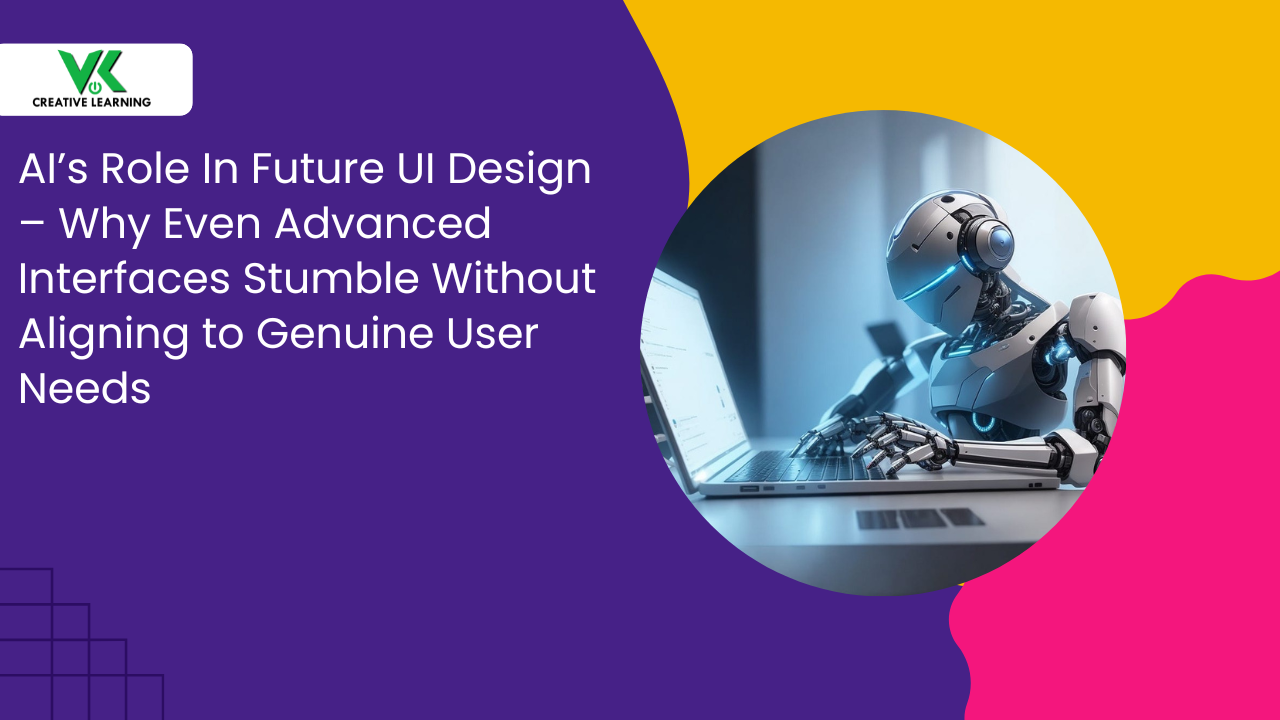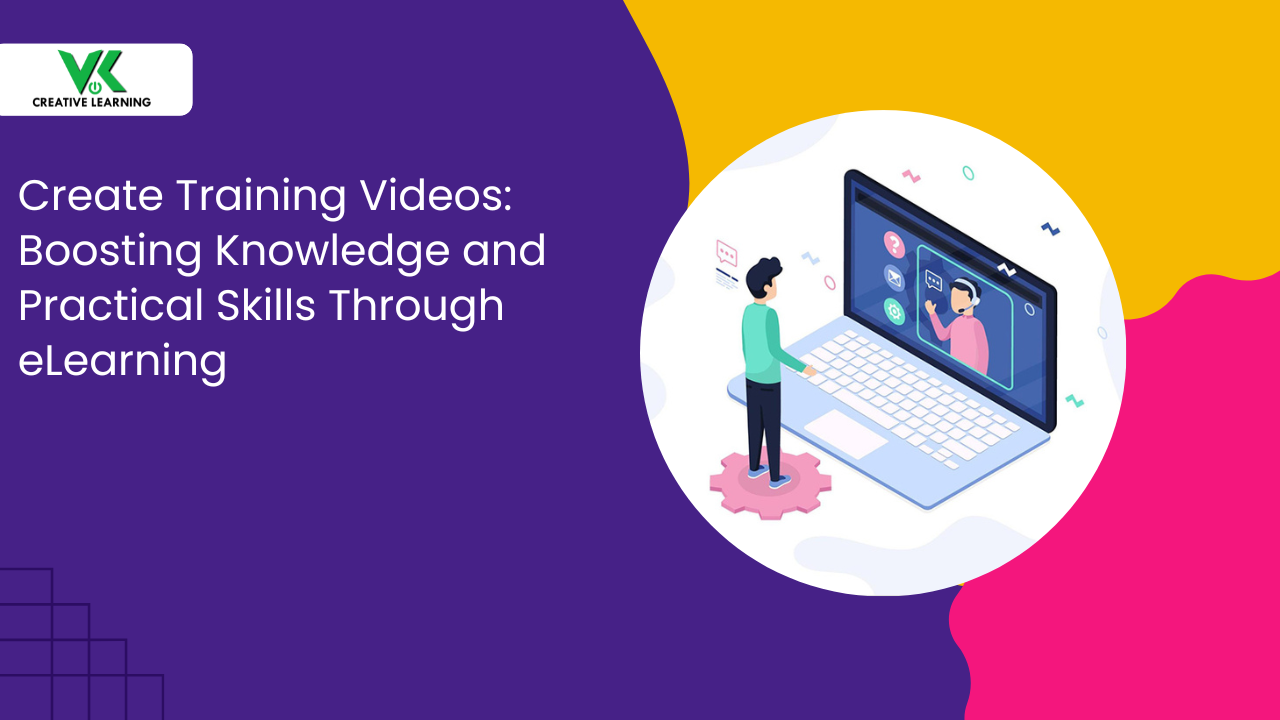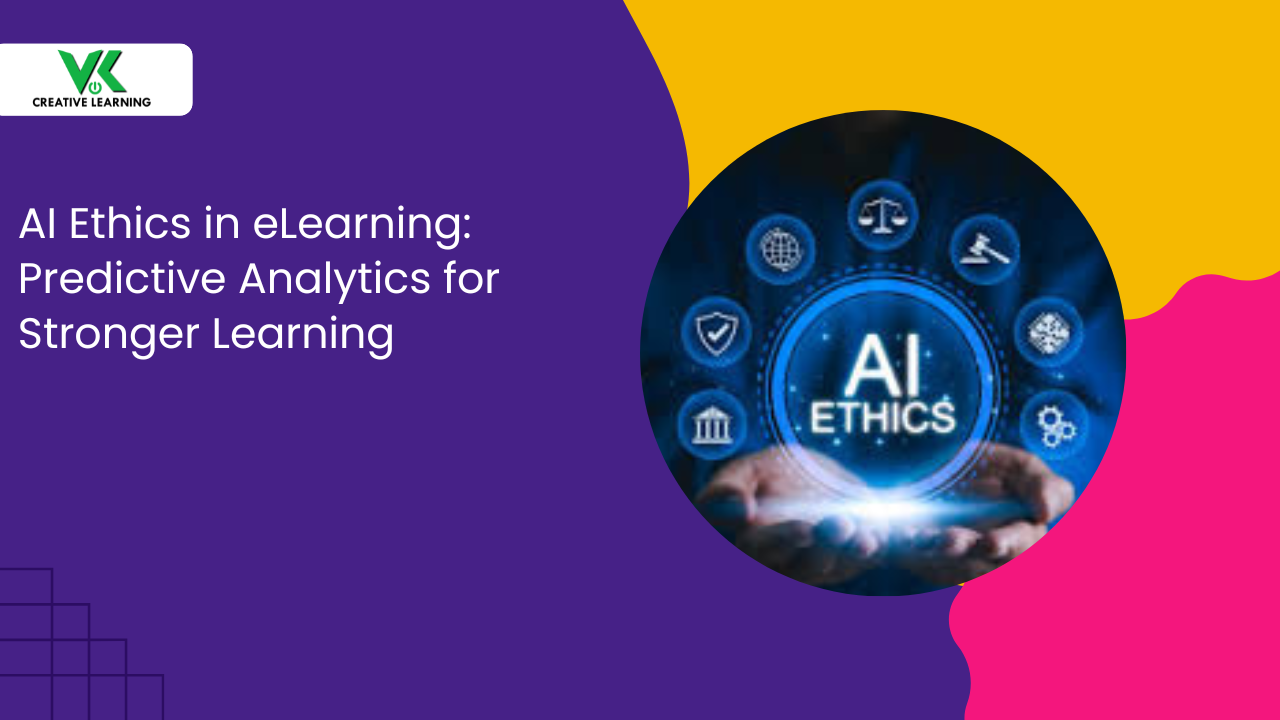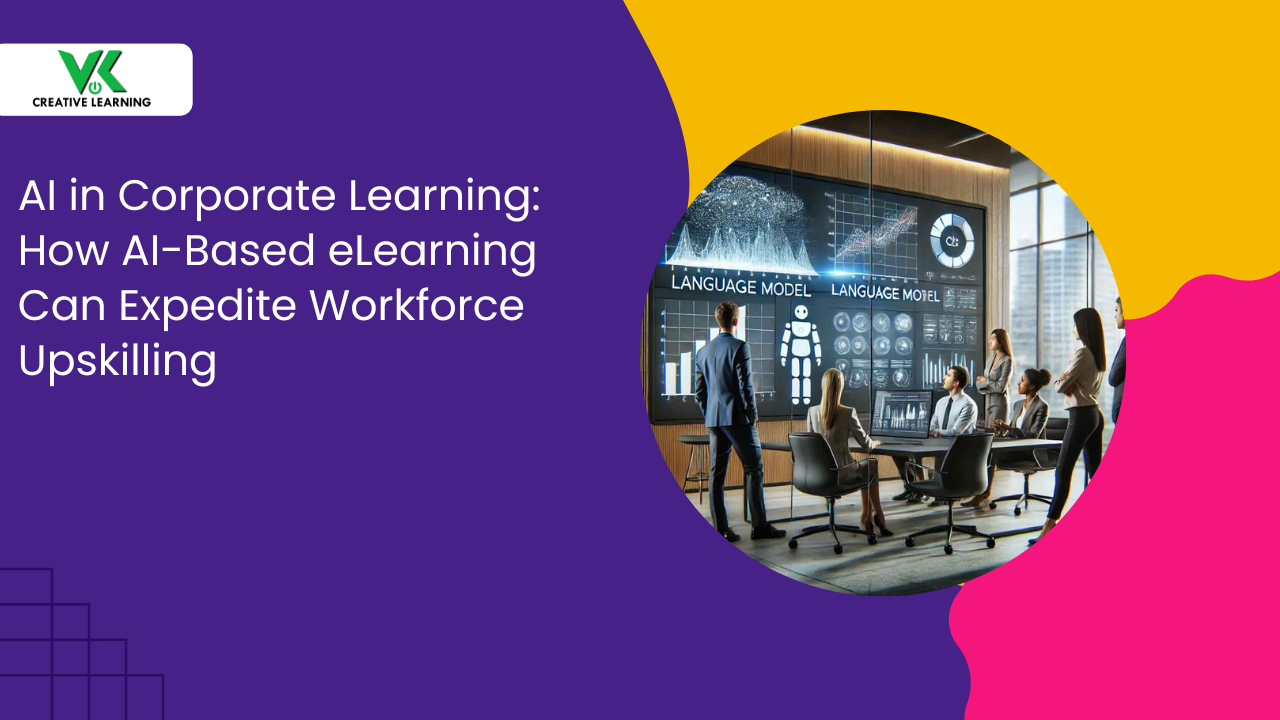Audio Descriptions and 3D Storytelling in E-learning: Enhancing Knowledge-Building Process
June 17, 2025
E-learning goes beyond videos, slides, and text with no elaborate explanation. In fact, e-learning is known to make content engaging and rich in information.
Importantly, e-learning is made in such a way that students experience lessons as a part of some interesting story. Also, with tools in the virtual platform like audio descriptions and 3D storytelling, e-learning makes learning fully enjoyable.
Also, it makes the course materials completely inclusive than before. Moreover, it is known for enhancing accessibility in education for knowledge gainers. This means students can access any course, any time as when they wish.
We shall understand more about audio descriptions (what they are) in the subsequent sections. We shall also have a look at why it is used along with storytelling in e-learning.
Table of Contents:
Why Use Audio Descriptions and Storytelling in E-learning?
What exactly are Audio Descriptions and their use with Storytelling?
Learning Enhancement: 3D Storytelling with Audio Descriptions
- Experiencing, Not Watching: A Curiosity Magnet
- Simplifying Complexity Through Virtual Movement
- Walking Through Ideas, Not Just Reading Them
Bringing Together Audio Descriptions and 3D Animated Storytelling in One Lesson
Why Use Audio Descriptions and Storytelling in E-learning?
Surprisingly, there are some students who are not comfortable with reading text without examples or illustrations. Additionally, only watching lecture videos becomes difficult without animations.
Importantly, some individuals may face visual challenges, and hence, they may have learning disabilities. Besides, there may be people with varied learning styles -- audio or practical-based learning.
In consideration of these, accessibility solutions like audio descriptions turn handy.
Table of Contents:
What exactly are Audio Descriptions and their use with Storytelling?
Audio descriptions are a spoken version that is supplemented with videos. Hence, learners end up getting a hang of every visual element as sound is provided.
With 3D storytelling and nicely narrated audio in e-learning, content comes alive. Take us take an example of a lesson related to a forest ecosystem explained with storytelling and audio.
In such cases, the learners will feel like passing through a lush green forest. Also, they will end up gaining information about the actual ecosystems.
In such cases, audio descriptions in the form of storytelling narration with sounds of birds and moving trees make learning enjoyable. These combinations are immersive in nature for learners as they go beyond teaching, but also stick in the memory.
Adding storytelling in the form of 3D can aid to create strong emotional connections with content. This helps learners to relate to topics with actual work and understand lessons deeply.
Also, it has to be borne in mind that audio descriptions aren’t just about rendering any person’s voice-over. They can be interpreted as thoughtful explanations to support understanding.
Imagine that a presentation based on the environment of planets and space is shown to the students.
In such cases, the inclusion of audio descriptions would be helpful as planets' positions and movements can be understood clearly. This measure would assist visually challenged students to understand concepts. Also, kids interested in learning through listening will find it interesting.
Moreover, when 3D visuals are mixed with audio, they cater to varied learning types. That is: some students may choose pictures while others would prefer hearing explanations.
The best part: these accessibility solutions can be opened as when desired by students.
Learning Enhancement: 3D Storytelling with Audio Descriptions
3D storytelling, when fused with audio descriptions (that is: narrated explanations with scene depictions), takes learning to a new level. What makes this feature unique: making use of 3D animations and simulated imagery to bring education alive.
Remarkably, this combination makes learners feel more movie-like real experience with characters and different voice-overs. Hence, they get registered in the mind with truly immersive involvement.
Inclusion of layered visuals with in-depth explanations help the cause. It also contains richly descriptive soundtracks such as rhythms in classical form, along with themed background music. Importantly, the presence of scenes with voice-guidance further aids understanding.
For instance, when a historical lesson is taught, it will reshape into a highly interactive and cinematically enthralling experience.
Importantly, all situations will be presented inside an ancient city with details of culture. These in-depth 3D-based animated visuals will depict what happened at that time with audio descriptions. These videos can be fetched as a convenience, and hence, this would enhance accessibility in education.
Experiencing, Not Watching: A Curiosity Magnet
The duo combination makes students cease to be just as spectators. That is, they are no longer silent audience members or watchers and passive learners. They can dive into the actual scenarios and become part of various scenes as if they are happening in front of them.
Think about it in this way: the students can walk through the environments with voice-narration, where they are. The use of 3D simulations in those places further enhances the topic/subject understanding.
Consequently, this results in the growth of curiosity, and it further blossoms as their knowledge improves. This kind of curiosity invitation with compelling animations and audio is mentally gripping in every way. Precisely, they capture the attention of learners with interesting multimedia and audio-based stories rather than thrusting content onto the learners.
Distinguishing point: subjects that were once considered difficult to grasp spring into lively and lovable expeditions. This is, thus, more like wonderful animated tours with a twist. It is also filled with a bit of mystery, uncovering, and thrill.
Simplifying Complexity Through Virtual Movement
3D storytelling unpacks and eases concepts that may be complicated for most learners. These intricate lessons may be confusing with layered theories and contain multi-step processes.
For example, a lesson on galaxies might be taught to students that weaves in animated planets and star systems. With animations of colorful celestial bodies with audio descriptions, concepts become easier. Even in the case of constellations, star names being described with space clusters portray a beautiful cosmic visual.
Still better: subjects or topics in physics, math, biology, and geography come alive as visually clearer and understandable. This kind of combo presentation, played through 3D animated exploration with audio, has its own charm.
Walking Through Ideas, Not Just Reading Them
The storytelling with narration of events or objects in a museum exhibit ensures that learners can gain a 360-degree of understanding. It is like stepping and exploring a concept inside out with illustrations and animations. Further, the presence of interactivity elements with detailed visuals and audio makes the experience even better.
This style of explanation, along with lectures, opens up a new learning frontier for learners. Consequently, all these elements help to create a mental map that they can explore at will.
Moreover, these aspects add to the depth of concepts and render immersive engagement. The best aspect: definitions and topics intricate in nature evolve into something easily explainable. Thus, concepts become to a lesser extent confusing, and importantly, more relatable.
Bringing Together Audio Descriptions and 3D Animated Storytelling in One Lesson
The audio descriptions can be for verbal representation, illustrative narration, and spoken frame of reference. When combined with 3D visuals in the form of animated models, learners get a magnificently story-soaked knowledge.
Notably, learners can right away latch onto what's shown to them through lifelike sights with lively sounds.
Example: a 3D rainforest (think of a dense jungle setting) is unveiled visually, with audio narration. This helps to mentally paint out the scenes in the mind of trees, animals, and weather.
Further, the scene can be beyond pictures; it develops as an impression-leaving image and stays forever in the mind. Thus, this combo kind of learning experience turns out to be eye-catching. In addition, concepts become memorable for learners as they are able to retain and recall concepts.
Importantly, students, when presented with multiple topics, can soak up the actual scene, though it may be complex in nature.
All in all, the use of both media involves collaboration with ears and eyes in tandem, which provides its own set of benefits. Wouldn't it be a great scene when you see birds flying during the rainfall and trees waving? Beautiful part: you are able to hear dropping raindrops; suddenly, all of a sudden, the forest comes buzzing!
Conclusion
When 3D storytelling is supported by audio descriptions, it improves learning. The visualized stories, complemented by spoken details, enhance memory. It also improves focus and understanding for every learner.
For creating 3D-based storytelling with audio descriptions, you can contact VK Creative Learning (VKCL).
